The Influence of Non-places in the Concept of Latin America, by Eduardo Navas
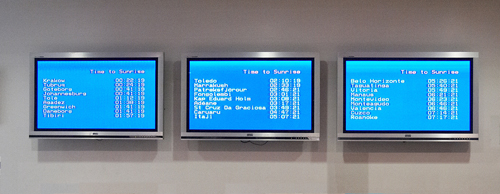
Paul Ramirez-Jonaz, “Another Day” (2003), video installation, image courtesy of the artist.
This essay, made available here in English and Spanish, was written for the exhibition Transitio _MX 03, which took place in Mexico City in October 2009. The text was published in December 2010 in Errata, a Colombian journal dedicated to art and culture. The text explores the concept of non-places (which is the foundation of my curation for Transitio), as a recurrent and pervasive cultural variable not only in Latin America but other parts of the world.
Above and below are images of the works curated in the exhibition, complemented with excerpts from the text.
Download the text in PDF format: English and Spanish. Download the actual publication (only in Spanish) Also, read the complete journal (only in Spanish).
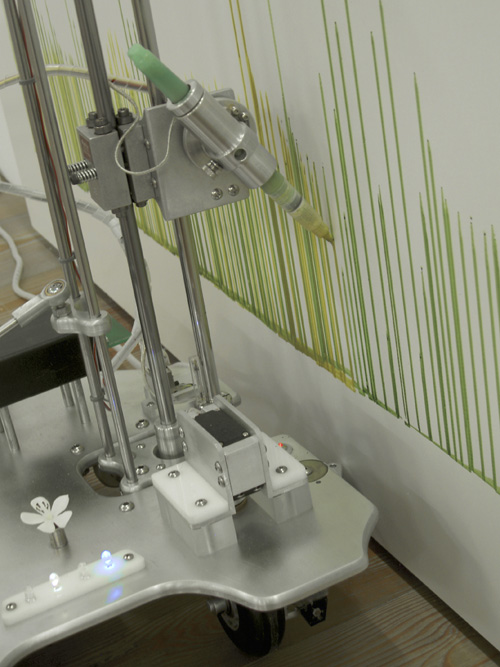
Sabrina Raaf, “Translator II: Grower, 2004-2006,” Robot and Installation, image courtesy of the artist.
excerpt:
The works included in “Autonomies of Disagreement” were selected to reflect on glocality versus locality in Latin-American production in relation to the concept of non-place. Glocality is commonly defined with the saying, “act local, think global.” With this concept as a cultural foundation, my curatorial approach was developed to support what I consider a key element of Transitio_MX 2009’s theme of “Autonomies of Disagreement”, as evaluated in the Festival Statement, which is to keep in mind the relevance of geopolitical differences that shape the use of appropriation and technology in artistic practices.
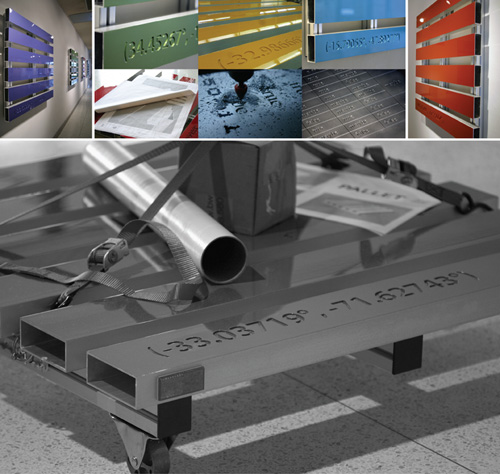
Carlos Rosas, “GPS Pallet Series: (Coordinate) Paintings/ I Think I Got IKEA’d Project, Bulls on Parade: Protest Remixes y Step and Repeat Cycles: Live/ Networked Installation y Remixed Sessions,” Installation.
Excerpt:
The term non-place is applied here after the theory of supermodernity introduced in 1992 by Marc Augé in his book Non-places, Introduction to an Anthropology of Supermodernity. Augé views non-places as areas of transition, such as airports, conditioned with a familiarity that is homogeneous. He also extends his concept to spaces that need not be visited, but named, or referenced through pervasive images. He argues that people eventually become familiar with such places by mere reference.
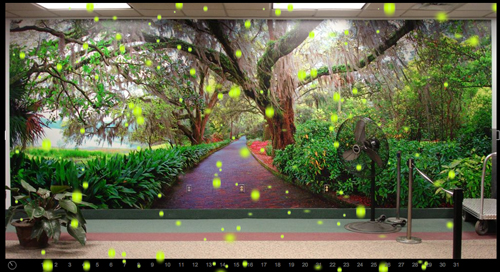
Owen Mundy y Joel Dietrick, “Anemophilous Formula for Computer Art,” Wall Projection, real time animation.
Excerpt:
Auge’s premise was revisited in 2002 by Hans Ibelings in Supermodernism, Architecture in the Age of Globalization. Ibelings views the homogeneity of tourism initially examined by Augé to be best expressed in the spectacular architecture of Las Vegas, which metaphorically speaking, names or cites a place. In other words, Las Vegas is architectural simulacra of other places in the world.
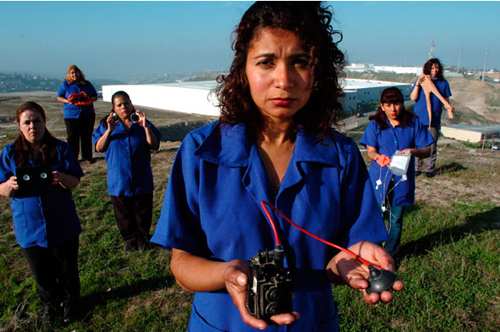
Vicky Funari y Sergio de la Torre, Maquilápolis, video, 2006, Documentary Film.
Excerpt:
The Internet also has non-places of its own. Yahoo, Google, YouTube, Facebook and all other major portals and social networking sites help users navigate online spaces with interfaces that, like the airport, can be considered places of transition, of constant flow and change. Users in turn feel more comfortable with the material that is accessed because individuals are often allowed and even encouraged to customize their interfaces with bookmarks and various forms of tagging for ongoing access. Latin American art production is informed by such developments as well as the physical mobility of people from different countries.
The art projects I selected for Transitio_MX, in varying degrees, are informed by the current stage of networked culture; they also expose contradictions of global trends of migration. Given this focus, not all the artists are “Latin American” but rather their work has an intimacy with issues that are relevant to Latin America as a concept that moves across borders as a collective of complexities that are difficult to define. This approach opens up a space to discuss how cultural identification today is even more multi-layered than before, which is why the selected projects share questions on how locality and glocality are terms that may be interchangeable according to a person’s particular position in both class and culture–closely defined by education and accessibility to technology. “Glocality,” as the ability to function locally with a global awareness, is a term that only a certain number of people, unfortunately, are able to contemplate at the moment. This obviously needs to change, and the works chosen for Transitio_MX aim to demystify this elitism. Glocals are people invested in the actual production of a global culture at an informational level—the most important level in which meaning is currently produced and controlled. The artists participating in Transitio_MX are part of this small, selected group, and as such have to be conscious of their practice as a critical tool that can ultimately endorse the global system.
Within this critical framework, Another Day (three monitors) 2003, by Paul Ramírez-Jonas (Honduras/ United States) depersonalizes and universalizes the ongoing travel that takes place around the world, by making the sun the traveler. The video Maquilápolis 2006, by Vicky Funari (United States) and Sergio De La Torre (Mexico/United States) aims to expose the contradictions at play in the global economy on how goods are produced with unfair labor laws. Translator II: Grower, 2004-06, by Sabrina Raaf (United States) exposes the tension, or discord of dislocation that can be superceded if the migrating subject is willing to come to terms with the displacement of the body by way of mechanical labor. I THINK I GOT IKEA’D: Finish Fetish and other projects, by Carlos Rosas (Chile/United States) expose how location can become abstracted in terms of painting or sound, while still providing a sense of concreteness by mere citation of concepts. And Anemophilous Formula for Computer Art, by Owen Mundy (United States) and Joelle Dietrick (United States), literally takes apart the concept of non-place, by recontextualizing a paper-wall image of a national park located at an airport lobby.
Read the complete text in PDF format: English and Spanish. Download the actual publication (only in Spanish) Also, read the complete journal (only in Spanish).








